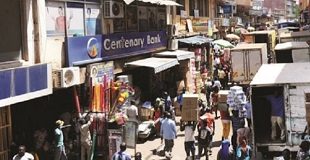
Contrary to popular belief, refugees are on par with non-refugees when it comes to loan repayment
Project Syndicate, 2019 | JACQUELINE MUSIITWA | Every minute, on average, 31 people are displaced around the world – forced to leave their jobs, homes, and even their families. These refugees often arrive, after arduous journeys, in new countries with no money or identification, and few possessions. Yet, far from securing a safer, more prosperous future, they often find themselves marginalised, excluded, and even demonised, denied opportunities to integrate into their host societies or contribute to the local economy. One straightforward way to empower refugees is to give them access to financial services.
Financial service providers (FSPs) have long neglected this population, owing to accessibility and identification challenges, together with perceptions of refugees as a high-risk group. But technological advances in the last decade have made providing financial services to refugees easier, safer, and more cost-effective than ever.
Thanks to digital and mobile technologies, banking no longer happens primarily in brick-and-mortar branches, but rather on people’s phones, wherever they are. This has facilitated the rise of digital wallets that enable users to receive, store, and spend money using only their phones. In recent years, mobile money has become wildly popular in Sub-Saharan Africa in particular, and it can be a game changer for the world’s massive unbanked population – 1.7 billion people – two-thirds of whom already own a mobile phone that could act as a gateway to financial services.
There is little reason to distinguish refugees from the rest of the world’s unbanked. Contrary to popular belief, refugees are not a higher-risk demographic: the Kiva Refugee Impact Report found that, when it comes to loan repayment, refugees are on par with non-refugees. Moreover, thanks to facial-recognition and artificial-intelligence technologies, banks can now instantly verify users’ identities, using, for example, a quick iris scan run through an open-source identity-verification application programming interface (API).
As a result, refugees’ lack of an identity card, loan collateral, and/or a fixed address is becoming irrelevant. This will be all the more true with the introduction of ID2020, a collaboration among Microsoft, Accenture, and the United Nations that will use biometric data and the blockchain (distributed ledgers) to create an encrypted, permanent, and shareable means of identification for all refugees.
It is in the interest of FSPs themselves to make use of the blockchain. True, the technology – which facilitates direct transactions among parties, creating a permanent and immutable record – has the potential to displace FSPs in the long term, by ending their monopoly on intermediating trust. But, in the short term, its adoption by banks could slash costs and reduce the risk of fraud, thereby enabling the rapid expansion of services to refugees, among others. In this sense, the blockchain could revolutionise credit access for refugees.
Already, the blockchain is being used to help refugees. For example, in Jordan, the Zaatari refugee camp distributes humanitarian aid using the blockchain and cryptocurrency. Each refugee is issued a digital wallet, into which money for food and supplies is deposited, with facial recognition being used to verify transactions. The results have been compelling: fair and accurate aid distribution, a 98% reduction in transaction fees, and fewer cases of misappropriation of funds.
 The Independent Uganda: You get the Truth we Pay the Price
The Independent Uganda: You get the Truth we Pay the Price


